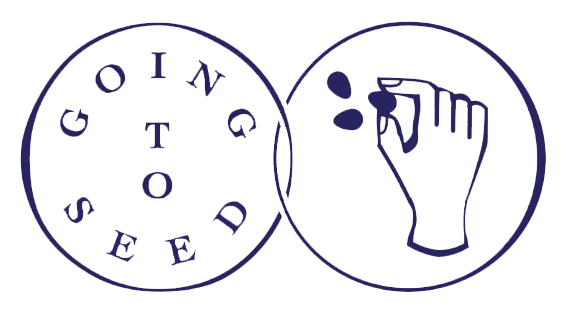Seed Saving Guidelines
Below are some basic guidelines. The last section contains a list of free online resources where you can look up details if you have questions about a specific vegetable that you haven’t saved seeds from before.
Dry Process
- Allow the pods to dry on the plant (preferably), and harvest them individually.
- Another option (especially if a frost or heavy rain is imminent) is to pull out the whole plant with its seed pods, and hang the plant to dry. As the plant dies, the seeds continue to mature and gain strength.
- Thresh seeds by putting the pods in a burlap sack or pillowcase and stomp on it so that the pods crack open. Be careful not to damage the seed coats of beans, as any damage will reduce germination significantly.
Wet Process
- Cut open the fruit or vegetable and remove the seeds.
- Wash the seeds. Place the seeds with pulp in a large bowl or bucket. Add twice as much water as the seed/pulp mix and stir vigorously. Good, viable seeds are more dense and will sink to the bottom; poor quality seeds tend to float. Pour off the floating seeds and debris and add more water. Repeat the process until only clean seeds are left. Then pour them into a strainer and wash under running water.
- Dry the seeds. Wipe the bottom of the strainer to remove as much moisture as possible. Thinly spread the seeds onto a glass or ceramic dish, cookie sheet, or window screen. Do not dry on paper as the seeds may stick. It is important to dry seeds as quickly as possible, because warm, wet seeds will start to germinate or become moldy. Stir the seeds several times a day to aerate.
Fermentation Process
- Remove the seeds and mix them with enough water to cover by about an inch. It is fine if the seeds and water are mixed with some of the flesh of the fruit or vegetable.
- Allow the seeds to ferment for 1-4 days.
- When a layer of white or gray mold has formed on top of the water—this mold breaks down inhibitors to germination such as the gel sac around tomato seeds—the fermentation is complete. Add more water, swish it around, and pour off the mold and pulp. The viable seeds should sink to the bottom (bad seeds will float).
- Set seeds on a plate or screen to dry thoroughly.
Seed drying (applies to all three processes)
All seeds should be thoroughly dried, as quickly as possible. Spread seed in a single layer, and dry at a temperature below 95 degrees F/ 35 degrees C, out of direct sunlight. A dehydrator is great, as long as the temperature can be set to 100 degrees or lower.
Once dry, freeze seeds in an airtight container (glass jar or tightly sealed plastic) for 48 hours to kill any pests. When removing them from the freezer, allow the container to come to room temperature before opening, to prevent condensation from rehydrating seeds.
Additional Resources
Breeding Organic Vegetables, ebook by Rowen White and Bryan Connely. A wonderful book covering all the methods of plant breeding and seed saving.
Basic Seed Saving from Rocky Mountain Seeds
Seed Processing and Storage (book by Jeffrey H McCormick)
Video about how pollination works.
Return to Resistance-- excellent book on breeding for 'horizontal' (but more recently termed 'durable') resistance. Frank Morton uses these techniques, watch this video for more information on plant disease nurseries.
Basic Seed Saving Instructions by Southern Exposure Seed Exchange
Free manuals at www.savingourseeds.org
The Organic Seed Alliance www.seedalliance.org
The Seed Savers Exchange www.exchange.seedsavers.org
The Grassroots Seed Network www.grassrootsseednetwork.org/
